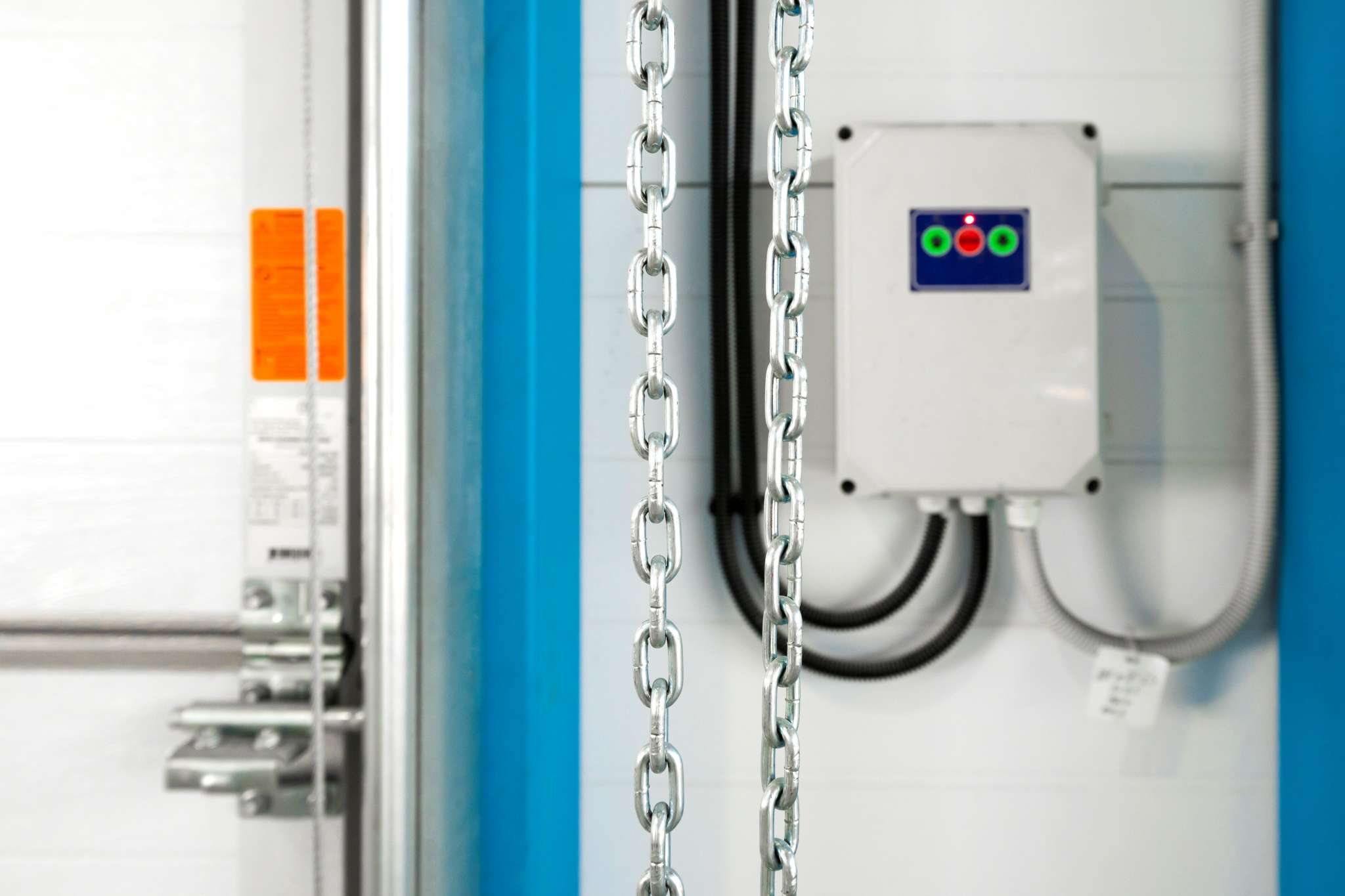Temperature management in storage and shipping
Latest update on 25 June, 2024 by Aaron Kwok– Marketing Analyst at FreightAmigo
The world of logistics is a complex tapestry, where every thread plays a crucial role in ensuring the seamless movement of goods from point A to point B. Among the many intricate strands that make up this intricate web, temperature-controlled shipping stands out as a vital component, catering to the unique needs of temperature-sensitive products across a diverse range of industries. As the global economy continues to evolve, the demand for precise temperature management throughout the supply chain has never been more pronounced. From perishable food items to life-saving pharmaceuticals, the integrity and safety of these temperature-sensitive commodities hinge on the effective implementation of cold chain logistics strategies. This article delves deep into the intricacies of temperature-controlled shipping, exploring the challenges, solutions, and best practices that empower businesses to navigate this specialized domain with confidence.
Want To Compare The Best Express, Air Freight, Sea Freight, Rail Freight & Trucking Rates So As To Have Better Control On Cost?
The Importance of Temperature-Controlled Shipping
Temperature-controlled shipping, also known as reefer or refrigerated shipping, is a specialized logistics solution designed to maintain precise temperature ranges for cargo during transit. This process is essential for preserving the quality, safety, and integrity of goods that are susceptible to temperature fluctuations. By ensuring that these temperature-sensitive items are transported within their optimal temperature ranges, businesses can mitigate the risks of spoilage, degradation, and potential health and safety hazards. This not only safeguards the well-being of end-consumers but also enhances the overall efficiency and reliability of the supply chain.
Understanding the Cold Chain Ecosystem
At the heart of temperature-controlled shipping lies the intricate web of the cold chain, a comprehensive logistics process that ensures the seamless movement of temperature-sensitive goods from their point of origin to their final destination. The cold chain ecosystem encompasses three primary stages:
Storage
This initial stage typically involves storing the products in temperature-controlled warehouses or facilities, equipped with advanced HVAC systems and monitoring technologies to maintain the desired temperature and humidity levels.
Transportation
The transportation phase is where temperature-controlled shipping takes center stage. Specialized containers, such as reefers or insulated trucks, are utilized to maintain the required temperature ranges during the journey, whether by road, rail, air, or sea.
Distribution
The final stage of the cold chain involves the last-mile delivery process, ensuring that the temperature-sensitive goods reach their intended recipients while preserving their integrity and quality. Refrigerated vehicles play a crucial role in this phase, minimizing the exposure of products to temperature fluctuations.
By seamlessly integrating these three stages, the cold chain management process ensures that temperature-sensitive products maintain their optimal condition throughout the entire supply chain journey.
Navigating the Diverse Temperature Requirements
Temperature-controlled shipping caters to a wide range of temperature requirements, catering to the unique needs of various industries and product categories. Understanding these specific temperature ranges is essential for ensuring the proper handling and transportation of goods. The key temperature ranges include:
Frozen Goods
For items requiring deep freezing, such as ice cream or frozen seafood, the optimal temperature range falls between -10°C to -20°C (14°F to -4°F)
Chilled Goods
Products like fresh produce and dairy items thrive in a chilled environment, typically within the range of 2°C to 4°C (35.6°F to 39.2°F).
Pharmaceutical Goods
Vaccines and temperature-sensitive medications must be maintained within a range of 2°C to 8°C (35.6°F to 46.4°F) to preserve their efficacy and safety.
Ambient Temperature Goods
Certain items, like cosmetics or chemicals, fare best at room temperature, which falls between 15°C and 25°C (59°F to 77°F).
Cold-Chain Goods
Some specialized products, including certain pharmaceuticals or specialized foods, require even tighter temperature controls, ranging from 8°C to 14°C (46.4°F to 57.2°F).
Adhering to these precise temperature requirements is crucial for ensuring the safe and reliable transportation of temperature-sensitive goods, maintaining their quality and integrity throughout the supply chain.
Temperature-Controlled Shipping Methods
To accommodate the diverse temperature requirements of various products, the temperature-controlled shipping industry has developed several specialized transportation methods:
Refrigerated Containers (Reefers)
Refrigerated containers, or reefers, are the workhorse of temperature-controlled shipping. These specialized containers feature built-in refrigeration units that can both cool and heat, making them versatile for transporting a wide range of goods, from perishable foods to pharmaceuticals and chemicals.
Insulated Containers
Insulated containers, with their thick insulation walls, rely on the initial temperature of the cargo and external conditions to maintain a steady temperature. While not as advanced as reefers, these containers are well-suited for short-distance transportation of certain perishable goods, such as produce or chocolate.
Temperature-Controlled Warehouses
Temperature-controlled warehouses are storage facilities equipped with advanced climate control systems, ensuring that temperature-sensitive products can be safely stored while awaiting distribution. These specialized warehouses play a crucial role in the cold chain management process, providing a secure and stable environment for goods.
By leveraging these diverse temperature-controlled shipping methods, businesses can tailor their logistics solutions to meet the unique requirements of their temperature-sensitive products, ensuring their safe and reliable transportation.
Challenges in Temperature-Controlled Shipping
Despite the advancements in temperature-controlled shipping, the process is not without its challenges. Businesses must navigate a variety of obstacles to maintain the integrity of their temperature-sensitive cargo. Some of the key challenges include:
Temperature Fluctuations During Transit
Maintaining a consistent temperature throughout the shipping process can be a significant challenge, especially during long journeys or when transferring products between different modes of transportation. Temperature fluctuations can lead to spoilage, degradation, and other quality issues.
Power Supply Issues
Interruptions in power supply can compromise the effectiveness of refrigeration systems, putting temperature-sensitive cargo at risk. Businesses must be prepared with backup power sources, such as generators or battery backups, to ensure continuous temperature control.
Equipment Breakdowns
Even with meticulous maintenance, equipment breakdowns can still occur, jeopardizing the temperature integrity of the cargo. Proactive measures, such as regular inspections and the availability of spare parts, are crucial for mitigating this challenge.
Regulatory Compliance
Many industries that rely on temperature-controlled shipping, such as pharmaceuticals and food, are subject to strict regulations and guidelines. Businesses must ensure compliance with these requirements to avoid legal and safety issues.
By addressing these challenges and implementing proactive solutions, businesses can navigate the complexities of temperature-controlled shipping with confidence, ensuring the safe and reliable transportation of their temperature-sensitive products.
Strategies for Optimizing Temperature-Controlled Shipping
To overcome the challenges and maximize the efficiency of temperature-controlled shipping, businesses can employ a range of strategies:
Implement Advanced Monitoring Systems
Investing in real-time temperature and humidity monitoring systems can help businesses quickly detect and address any fluctuations, ensuring that the cargo remains within the desired temperature range throughout the journey.
Utilize Backup Power Sources
Equipping reefers and other temperature-controlled transportation methods with backup power sources, such as generators or battery backups, can provide a safeguard against power interruptions, maintaining the integrity of the cargo.
Prioritize Proper Cargo Handling
Ensuring that temperature-sensitive products are properly pre-cooled, stored, and handled during loading and unloading can significantly contribute to the overall success of the temperature-controlled shipping process.
Provide Comprehensive Employee Training
Educating employees involved in the temperature-controlled shipping process, from warehouse workers to drivers, on the importance of temperature management and proper handling procedures can help mitigate the risk of errors and delays.
Optimize Transportation Routes
Carefully planning transportation routes that minimize the exposure of temperature-sensitive goods to extreme temperatures can help maintain the required temperature ranges throughout the journey.
Partner with Experienced Logistics Providers
Collaborating with temperature-controlled shipping experts who have a proven track record and access to a robust network of carriers and storage facilities can greatly enhance the reliability and efficiency of the overall logistics operation.
By implementing these strategies, businesses can optimize their temperature-controlled shipping operations, ensuring the safe and reliable transportation of their temperature-sensitive products.
The Role of Technology in Cold Chain Management
As the temperature-controlled shipping industry continues to evolve, technology has emerged as a powerful enabler, transforming the way businesses manage their cold chain logistics. Some of the key technological advancements include:
Internet of Things (IoT) Devices
The integration of IoT-powered sensors and monitoring devices within reefers, containers, and warehouses allows for real-time tracking and analysis of temperature, humidity, and other environmental conditions. This data-driven approach enables businesses to quickly identify and address any deviations, ensuring the integrity of their cargo.
Predictive Analytics
By leveraging advanced data analytics and machine learning algorithms, businesses can gain valuable insights into their temperature-controlled shipping operations. This includes predicting potential equipment failures, optimizing transportation routes, and anticipating temperature-related risks, empowering proactive decision-making.
Blockchain Technology
The implementation of blockchain technology in cold chain management can enhance transparency, traceability, and security throughout the supply chain. This distributed ledger system can provide a tamper-proof record of temperature data, shipment details, and other critical information, fostering greater trust and accountability.
Autonomous Vehicles
The emergence of self-driving trucks and drones is transforming the transportation landscape, including temperature-controlled shipping. These autonomous solutions can enhance efficiency, reduce human error, and provide more reliable temperature control during the last-mile delivery process.
By embracing these technological advancements, businesses can optimize their temperature-controlled shipping operations, improving visibility, responsiveness, and overall supply chain resilience.
Partnering with a Temperature-Controlled Shipping Expert
Navigating the complexities of temperature-controlled shipping can be a daunting task for businesses, especially those new to the field or managing a diverse portfolio of temperature-sensitive products. Partnering with an experienced logistics provider can significantly enhance the efficiency and reliability of cold chain management.
When selecting a temperature-controlled shipping partner, businesses should look for the following key attributes:
Specialized Expertise
The partner should have a proven track record of successfully managing temperature-controlled shipping operations, with a deep understanding of the unique requirements and challenges associated with this specialized logistics domain.
Robust Carrier Network
Access to a comprehensive network of vetted carriers, including those with specialized temperature-controlled equipment and expertise, can provide businesses with greater flexibility and reliability in their shipping operations.
Integrated Cold Storage Solutions
The ability to seamlessly coordinate and integrate temperature-controlled warehousing and storage solutions can help businesses streamline their cold chain management processes.
Regulatory Compliance Capabilities
The partner should demonstrate a thorough understanding of the relevant regulations and guidelines, and have the necessary processes and systems in place to ensure compliance.
Technological Capabilities
Leveraging advanced technology, such as real-time monitoring, predictive analytics, and blockchain-based traceability, can enhance visibility, responsiveness, and overall supply chain resilience. By partnering with a temperature-controlled shipping expert, businesses can focus on their core competencies while entrusting the complexities of cold chain management to a trusted logistics provider, ultimately improving the safety, quality, and reliability of their temperature-sensitive cargo.
Conclusion
In the ever-evolving world of logistics, temperature-controlled shipping has emerged as a critical component, catering to the diverse needs of industries that rely on the safe and reliable transportation of temperature-sensitive products. By understanding the intricacies of the cold chain ecosystem, navigating the complex regulatory landscape, and embracing technological advancements, businesses can optimize their temperature-controlled shipping operations, ensuring the integrity and quality of their cargo. Through strategic partnerships with experienced logistics providers, businesses can leverage specialized expertise, robust carrier networks, and integrated cold storage solutions to overcome the challenges of temperature-controlled shipping. By prioritizing temperature management, regulatory compliance, and a customer-centric approach, businesses can position themselves as leaders in their respective industries, delivering exceptional value to their customers and stakeholders. As the demand for temperature-controlled logistics continues to grow, businesses that proactively invest in this specialized domain will be well-positioned to navigate the future of the supply chain, solidifying their place as innovators and trusted partners in the global marketplace.
If you’re looking For Logistics Experts, Please Go To The FreightAmigo Page For Inquiries
What is temperature controlled logistic l cold- chain logistic? | FreightAmigo
If you have any inquiries on logistics / supply chain, feel free to contact FreightAmigo now:
Chat with us online | Hotline: +852 28121686 | WhatsApp: +852 27467829









































